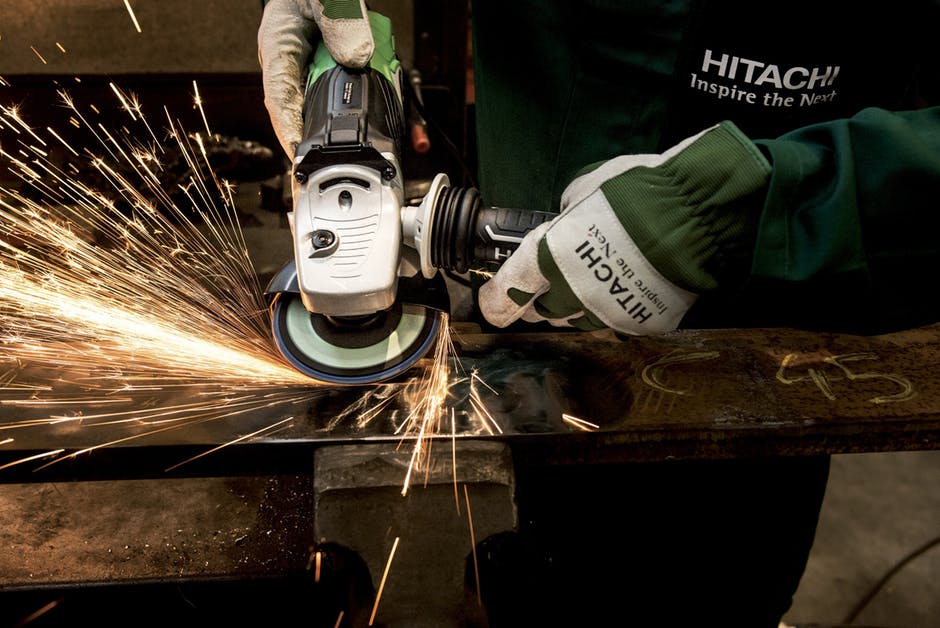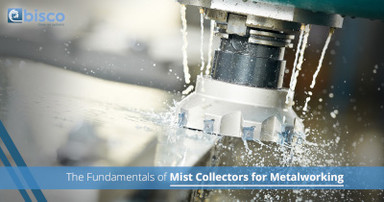Nov 5th 2017
The Fundamentals of Mist Collectors for Metalworking
Most metalworking companies utilize mist collectors for a variety of reasons. Whether they’re looking to provide clean air for their employees, reduce maintenance costs, or they are required to comply with indoor air quality standards, mist collectors offer several benefits. At Bisco Enterprise, we’re proud to be an industry leader of air cleaning supplies and we understand how difficult it can be to choose the perfect mist collector for your workplace. In this article, our experts will cover the fundamentals of mist collection systems and how they can benefit your business.
Mist Collectors: Let’s Talk About Mist

Mist is most often defined as a liquid droplet that is 20 microns in diameter or less. While some manufacturers believe that if they can’t see mist, it doesn’t exist, we’re here to tell you that it does. Submicron mist can have a damaging effect on a manufacturing environment when it comes to worker exposure, machine functionality, and indoor maintenance.
A mist collector’s main function is to help remove mist and smoke droplets from the air. In order to accomplish this task, a mist collection system must merge small mist drops into larger ones. The machine then drains the collected coolant from the machine filters so they don’t get clogged or backed up. Most mist collection systems consists of three measurable properties, including:
- Pressure Drop - All mist collection systems have an operating pressure drop. As an integral part of your facility's energy cost equation, a higher pressure drop means that more energy is required in order for your collector to function properly.
- Efficiency - In order for your mist collection system to operate at an optimal level, it must be extremely efficient. The more efficient your system is, the cleaner the air will be in your facility.
- Flow Rate - The flow rate of a mist collector is important because it determines how much air will be cleaned. If the flow rate of your current collector is slow, the less mist and smoke it will be able to collect. If your flow rate is too high, energy will be wasted on a surplus of air being pulled through the collector.
At Bisco Enterprise, we offer a large selection of mist collection systems for a variety of manufacturing industries. Browse our website online to find the perfect collection system for your facility today!
Mist Collectors: Operation Fundamentals
In addition to the measurable mist collector properties listed above, mist itself also has a number of properties that can affect the performance of your machine.
- Mist Concentration - The amount of mist found in a volume of air can vary widely from application to application. In some recent field testing, measure mist concentrations can go as low as 3 mg/m3 and as high as 37mg/m3.
- Mist Temperature - When high temperature mist cools, condensation is likely to occur which can affect the actual droplet size of the mist. For water based coolants, the mist will evaporate at higher temperatures and lower levels of humidity, thus creating smaller droplet sizes.
Mist Collectors: Types of Filter Media
Many mist collection systems use fibrous filter media to effectively remove mist and smoke droplets from the airstream. There are four common filtration mechanisms that can be used.
- Sieving - Sieving is the most predominant filtration mechanism that can collect mist droplets that are greater than 10 micron. This filtration occurs when the droplet is physically too large to pass between two or more fibers. This is the same kind of technology that is used when an insect tries to fly through a window screen and is stopped.
- Inertial Impaction - This filtration method is often used to collect micron sized droplets and occurs when the airway direction changes. Smaller particles tend to have less inertia, meaning they can be carried around corners in the collection system.
- Interception - Interception is a filtration mechanism that collects mostly 0.1 to 1 micron size droplets. It occurs when a mist droplet follows an airstream but still comes close enough to a fiber to stick to it.
- Diffusion - Diffusion is typically used to collect very fine droplets that are less than 0.1 micron in size. Since these droplets are so small, they can easily be influenced by molecular forces within the airstream. This causes the droplets to move in the same direction as the airstream.
The Benefits of A Mist Collector
Many manufacturing industries use a variety of metalworking fluids to support the creation of their metal components. During this process, lubricants and coolants get converted into vapors, aerosols and mist, which can be extremely harmful to workers in the facility. When employees are exposed to metalworking fluids it can lead to a number of serious medical conditions including dermatitis, bronchitis and asthma. When you invest in a mist collection system for your facility, your protecting your employees from health hazards in the best way possible. Mist collection systems are also extremely cost-effective when it comes to your overall operational costs and they can be easily maintained over long periods of time. Most known for their durability, mist collectors offer years of service for any application.
Browse Mist Collection Systems
Bisco Enterprise is proud to be a leading provider of air pollution control systems including mist collectors, dust collectors and fume collectors. If you need assistance choosing a collection system for your workplace, contact our experts today! We’ll take the time to understand your unique collection needs before recommending the best mist collector for your facility!

